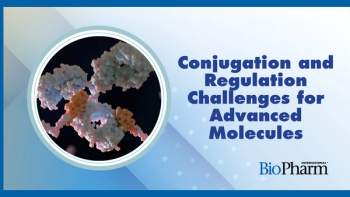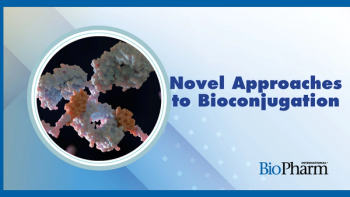
- BioPharm International-09-01-2019
- Volume 32
- Issue 9
Putting Biopharma Stability Testing Under the Microscope
Stability testing for biologics is more complex than for small-molecule drugs, so companies should be aware of the potentially serious issues that can be costly and jeopardize drug development.
Stability testing is an essential part of drug development and approval processes for both small- and large-molecule drugs, and enables regulators and companies to discern an appropriate shelf-life of a product so that drug efficacy is ensured and patient safety is not at risk. The global pharmaceutical stability testing market has been predicted to experience robust growth, partly as a result of the continuous rise of biologics (1). However, stability testing of biologics is a much more complex affair than that for small-molecule drugs.
“Unlike small-molecule drugs that tend to have limited structural conformations, biologics are significantly larger and, therefore, more complex with greater degrees of conformational freedom,” explains Phil Kuhlman, laboratory manager-biologics at RSSL. “In addition, tertiary and quaternary structure is maintained by multiple forces, which may be disrupted leading to conformational changes. These changes lead to reduced potency, aggregation, and increased risk profile to the patient due to enhanced immunogenicity. It is not that small molecules don’t degrade, more that large molecules have more options for reaching a state of reduced potency.”
A stability-indicating profile
As a result of the complexity of biologics giving rise to potentially multiple degradation pathways, a sole stability indicating assay is not sufficient to evaluate all critical quality attributes, emphasizes Alex Perieteanu, director, biopharmaceutical services at SGS Agriculture, Food and Life. “Manufacturers are, therefore, required to propose a stability-indicating profile that provides assurance that changes in the product potency, identity, or purity are detectable,” he says.
However, Perieteanu continues, there is not a one-size-fits-all approach for biologics. “Most people think about shelf-life stability and lot commitment when the topic of stability testing comes up,” he adds. “Although these are a good proportion of what is required in evaluations, there are also other types of stability studies that are critical and required.”
Naming a few, Perieteanu states some studies of note include in-use stability, photostability, shipping studies, and forced degradation. These studies are intended to subject the drug product to conditions it will encounter, whether during manufacture, shipment, storage, or in the clinic. “Of important consideration,” he says, “are the types of conditions, and stability-indicating methodologies that form the stability-indicating profile.”
Available tools and general practices
Although many of the same tools used in stability testing of small-molecule drugs, such as osmolality, pH, appearance, and mass, find use in biologics, the more complex large molecules also require additional analytical tools to help in the detection of conformational changes that can occur and which often lead to aggregation, states Kuhlman. Additional tools such as size-exclusion chromatography (SEC) using multi-angled laser light scattering (MALS) detection, or analytical ultracentrifugation (AUC), or field-flow fractionation (FFF) can be used to aid in biologics testing.
“Larger molecules also undergo post-translational modifications or exist as closely related isomers, both of which can lead to slight variances in isoelectric potentials,” Kuhlman continues. “The separation of these isoelectric variants by capillary electrophoresis is often used when characterizing and monitoring the proportions of these populations of molecules.”
“First and foremost,” asserts Perieteanu, “the analytics employed should be validated and should be shown to be stability indicating. In general, these methodologies should be able to detect changes in the products potency, identity, and purity.” Potency is particularly product specific, he explains, and can be dependent upon the known mechanism of action. “Methodologies such as cell-based functional assays, enzyme assays, or binding assays are critical (and commonly employed) as they provide practical in-vitrosolutions to monitor potency,” Perieteanu says.
For biological products, ‘absolute’ purity is difficult to determine, Perieteanu continues. As a result of the difficulties encountered, it is common for many methods to be used so that multiple quality attributes relating to purity can be assessed. “Techniques such as SEC are often used to detect soluble aggregation and fragmentation,” he states. “Sodium dodecyl sulfate-polyacrylamide gel electrophoresis/capillary gel electrophoresis (SDS-PAGE/CGE) can differentiate between covalent aggregates, fragments, and in some cases glycosylation. Hydrophobic interaction chromatography, ion exchange chromatography, or isoelectric focusing can look at charge distribution as an indication of deamidation/oxidation events, and peptide mapping can be used to provide a higher resolution understanding of such changes. In cases of (relatively) small biologics, traditional reverse-phase high-performance liquid chromatography (HPLC) with high pore size can be utilized to monitor degradation products as well.”
Further to the key purity and potency tests, Perieteanu highlights that other product characteristics, including appearance, visible and subvisible particulates, pH, moisture levels, reconstitution time, sterility, or alternative, are commonly assessed. “Additives or excipients may degrade and adversely affect the quality of the drug product, and as such may also need to be monitored,” he notes.
Presence of particulates and aggregate formation
A notable challenge affecting the stability of biologics is the potential presence of particulates. This issue is of particular concern for injectables as particulates can induce an immune response within the patient, which is extremely undesirable as it can lead to adverse reactions and reduced drug efficacy, explains Perieteanu.
Adding to Perieteanu’s comments further, Kuhlman confirms that special considerations on the container material for biologics are necessary. “The extraction of leachable compounds leads to contamination of small molecules, whereas within high concentration biologic samples, extraction of leachable compounds can lead to a catalytic formation of large-scale aggregates,” he says. “This stability question will be further complicated by the route of administration, for example the use of intravenous saline bags as a transport medium for a drug. Compatibility testing would need to be performed as part of the stability study to ensure that no adverse reactions occur.”
As a result of the complex nature of biologics and the further complications that can occur due to the route of administration, Perieteanu adds that particulates are not an uncommon occurrence and, as such, significant formulation development is required to prevent particulate development. “A comprehensive test paradigm is often employed during development and stability to monitor particulates and aggregate formation,” he reveals.
“When a protein undergoes conformational changes, hydrophobic amino acids, usually held in the core of the folded protein structure, are exposed and may coalesce with other protein molecules in a similar state,” asserts Kuhlman. “This process can be catalytic, leading to the formation of aggregates, or can be promoted by extractables and leachables from containers, such as silicone used to coat the vial stopper.”
Formation of aggregates is generally triggered by a change in the local (atomic) environment of a molecule, ultimately causing destabilization of the native structure of the molecule, adds Perieteanu. “Destabilized structures are often unfavorable energetically, and as such a ‘stabilizing’ cascade of events occur that ultimately culminate in the formation of visible particulates, which are energetically stable, but unwanted,” he says. “The testing panel employed (stability indicating profile) often focuses on detection various stages of these cascade events.”
These aggregates can then cause mechanical issues when using the syringe for administration, notes Kuhlman, and may, therefore, exhibit an increased immunological risk profile. “Protein aggregates tend to have increased immunogenicity, which ultimately reduces the efficacy of the biologic,” he explains. “Circulating patient-derived antibodies to the drug leads to increased clearance and thereby reduced potency and can ultimately lead to the need for that patient to be switched to a different medication.”
Not all smooth sailing
Potentially the most significant issue that can arise for a company developing a biological product is finding out the product is not stable under the respective stability conditions, states Perieteanu. “Finding this out during preclinical/clinical phases may trigger a requirement to manufacture multiple costly batches, additional formulation studies, or worse, may jeopardize the study,” he cautions.
Performing a suitable formulation study will help to prevent commencement of a stability program too early and finding that the biologic will not last the duration of the study, adds Kuhlman. “However, it is also important to note that the information gained during the stability study is only as good as the assays being performed,” he says. “If the CQAs have not been fully defined using an appropriate forced-degradation study, then the amount of useful data may be reduced or a critical attribute may be missed, risking patient safety further down the development path. Detecting this kind of issue later in the development cycle could also lead to the need to repeat the study.”
Despite stability normally being established or understood after formulation development and around the time preclinical batches are being prepared, there are many factors that can change in the transition from bench-scale to larger batch sizes, warns Perieteanu. “If the process is not robust, there is an increased risk of product instability,” he adds. “Most common product-related failure modes in our experience are covered under aggregation and oxidation, or deamidation events.”
“There is a need to ensure that stability studies run smoothly, otherwise the overall timelines for a drug’s development will be perturbed,” asserts Kuhlman. As there is a possibility that an unexpected result is detected during stability tests-such as unexpected development of a new species in an assay-then there is a regulatory requirement to be able to investigate these occurrences, identify the new product, and evaluate the significance it may have in the final drug product, he explains.
“Product-related impurities may have little effect on the potency of the drug,” Kuhlman adds. “Alternatively, they may be immunogenic leading to the need for formulation changes. Either way, being able to rapidly respond with a suitable investigation is essential.”
Highlighting the example of the FDA, Perieteanu specifies that if any quality defects in a distributed drug product that may potentially risk patient safety are identified, submission of a field alert report is required. “This includes reporting of any significant chemical, physical, or other change or deterioration in the distributed drug product,” he says.
However, Perieteanu underlines that there are a number of critical aspects that can facilitate a rapid resolution of quality defects in a product. “First, have a strong understanding of analytical performance characteristics,” he confirms. “Second, have a good understanding of the mechanism of degradation, the stability indicating profile, and how various degradation pathways manifest themselves. Third, armed with the information in the first two points, an experienced team of technical and quality investigators can investigate product failures within a GMP quality system.”
Best practices
An understanding of a molecule’s degradation pathway is critical, asserts Perieteanu, and can be achieved early on using limited degradation studies. “These studies can almost immediately shed light on any potential stability concerns prior to them becoming a risk to patient,” he says. “Furthermore, the studies will provide an understanding of how stability issues manifest themselves, enabling rapid resolution when issues potentially arise.”
For Kuhlman, an essential prerequisite for any company looking to enter stability studies is the performance of a suitable forced degradation study to identify the appropriate CQAs. “Having suitable assays both in terms of what needs to be detected as well as sensitivity is essential to generate the best outcome of a stability study,” he stresses. “Considering the length of time of a typical stability study (three years) and the associated costs, every effort should be made to optimize the success rate.”
One way of increasing experience level and reducing costs incurred is to use an outsourcing partner. “The primary benefits of outsourcing come from access to facilities and infrastructure, experts, and capacity, at a comparatively low cost,” summarizes Perieteanu. “The right contract organizations have an economy of scale that many sponsors cannot achieve internally. Additionally, outsourced partners often have experienced experts who have worked on stability programs for dozens of molecular entities. It’s critical that the entire panel of stability tests be performed within their respective test window. Thus, expert capacity is paramount.”
Reference
1. Frost & Sullivan, “Global Pharmaceutical Stability Testing Market Trends, Opportunities, and Future,” Market Report, store.frost.com, Jan. 13, 2017.
Article Details
BioPharm International
Vol. 32, No. 9
September 2019
Pages: 16–20
Citation
When referring to this article, please cite it as F. Thomas, “Putting Biopharma Stability Testing Under the Microscope,” BioPharm International 32 (9) 2019.
Articles in this issue
over 6 years ago
Improving Oligonucleotide Analysisover 6 years ago
Dealing with particulates or aggregates in biologicsover 6 years ago
What’s New in Manufacturing: Process Chromatographyover 6 years ago
More Predictable Post-Approval Change Policy on Horizonover 6 years ago
Best Practices for Studying Stability in Biologicsover 6 years ago
Developing an Effective Contamination Control Strategyover 6 years ago
Biologics Continue to Grow and Create Outsourcing Opportunitiesover 6 years ago
Plan Now to Share Your Expertise in 2020over 6 years ago
Seeking Solutions for Large-Scale GMP Viral Vector ManufacturingNewsletter
Stay at the forefront of biopharmaceutical innovation—subscribe to BioPharm International for expert insights on drug development, manufacturing, compliance, and more.




